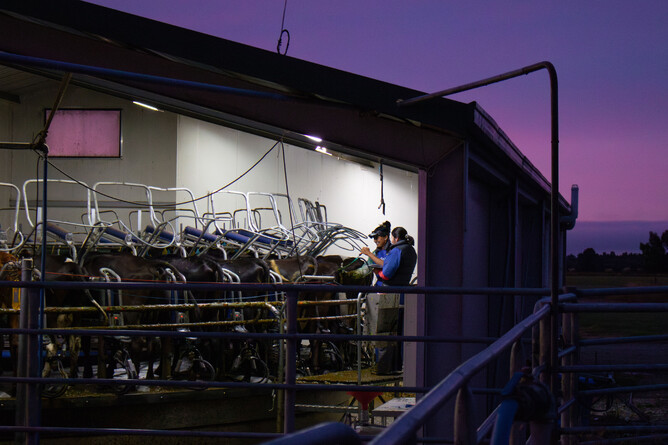Calving hasn’t long finished and mating is still in full swing, so it may seem too early to start thinking about pregnancy testing… wrong! Now is a great time to think about your scanning requirements and get dates and times booked in the calendar.
When to scan
In cows, the best time to age a pregnancy accurately is between 42 and 90 days after mating. For this reason, we usually recommend two scanning sessions:
A first scan in January to age the earlies and heifers.
A second re-check scan a while later to confirm the empties and age the lates.
Early age scans are used to figure out accurate calving dates and help you make informed decisions for your herd.
If you have used a synchrony hormone programme for your heifers, an early age scan 6 weeks after AI can help identify which heifers are carrying AI replacements and which have held to the bull. This needs to be done as close to six weeks as possible to enable accurate identification.
Why early age scan?
Knowing accurate calving dates enables you to make better plans around wintering and transition management.
You can create separate mobs for wintertime based on calving dates and draft more accurately into your springer group come calving. This will help you nail the crucial calving transition period and keep your girls in good condition.
Aged scanning allows us to calculate 3-week and 6-week in-calf rates, to see how well you are meeting targets. It’s important to work out the success of the repro programme you’ve used this mating season, as this will influence your decisions for next year.
Another benefit of getting us in to do an early age scan during repro season is it provides an opportunity to detect any cows with foetuses that are slipping and/or phantom cows that have been mated, haven’t conceived, but haven’t come on-heat again. We can then treat them accordingly (e.g. with a PG injection) to give them a chance to cycle again before mating ends.
During scanning, we can also identify reproductive issues, such as infections or cysts, and we might find cows carrying twins or calves with defects.
Would wearable tech impact scanning?
If using wearable rumination technology, should you bother getting your cows scanned?
Tech, such as collars or tags, tell the user when a cow is on-heat and give an optimum window for mating. After this, they can then start to calculate the likelihood of a cow being pregnant based on her pattern of heat behaviour. The longer a cow does not show heat behaviour (a drop in rumination with a peak in activity), the higher the chance that she is pregnant.
Likewise, the technology can also predict which cows are likely to be empty after mating is finished, as these cows will probably show repeated heat events at regular intervals.
Our take on whether scanning is still beneficial in these circumstances is:
None of the technologies can claim to be 100% accurate with their predictions. They monitor cow behaviour and link that to patterns of cows that were known to be on-heat, empty, sick etc. It is common to see cows that still show signs of being on-heat long after mating, yet when scanned they are found to be in-calf.
The only way to be absolutely sure of pregnancy is to physically ultrasound the cow and visualise the calf. Our scanners can accurately match the foetal size with the mating date. Skipping pregnancy testing could mean you miss out on key details and even risk culling the wrong cows.
What to expect from scanning
In rotary sheds we can scan during milking, so your farming operations aren’t affected. Our talented vets can keep up with milking speed! For those with herringbone sheds, we scan in between milkings – working as a team we can get the herd scanned quickly and back out to pasture.
While the vets are wearing headsets and wielding scanning wands, our fantastic vet techs work alongside them to capture the information they are discovering. They are pros at recording numbers!
This information will be compiled into a detailed report, including a list of empties, which will be sent to you 24 hours after the job. Your results will also be uploaded into MINDA. You can help with the accuracy of this data by making sure your ear tags are all present, correct and clean before a scanning session.
Following the report, your KeyVet can provide a more in-depth analysis of your farm’s reproductive performance, if you would like to look into it further.
So, get your scanning booked in with us today! If you are new to scanning with VetSouth, or would like to know more, please contact our friendly team to discuss your scanning needs.

